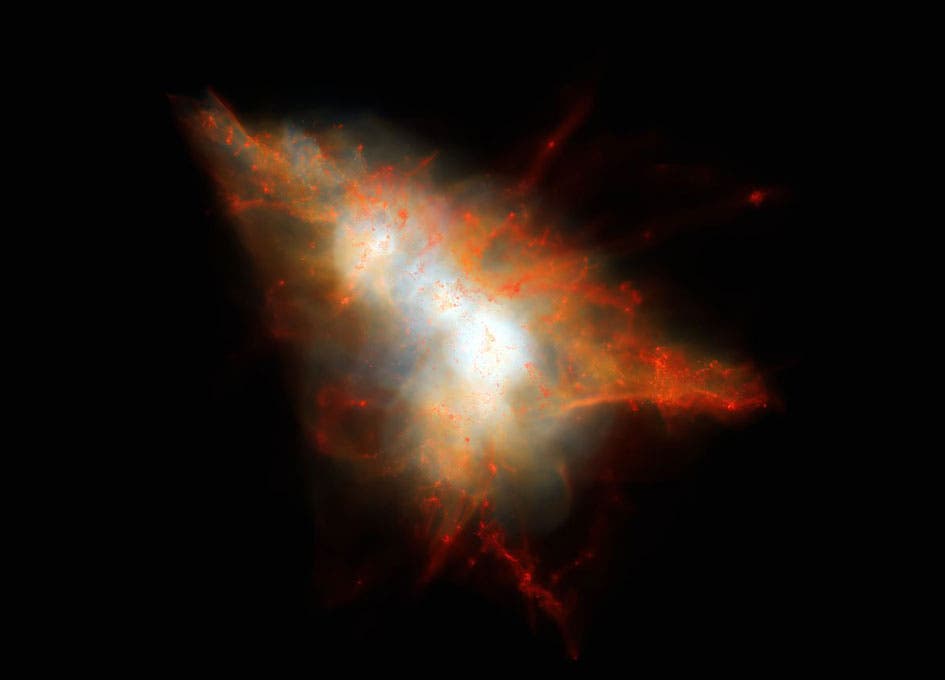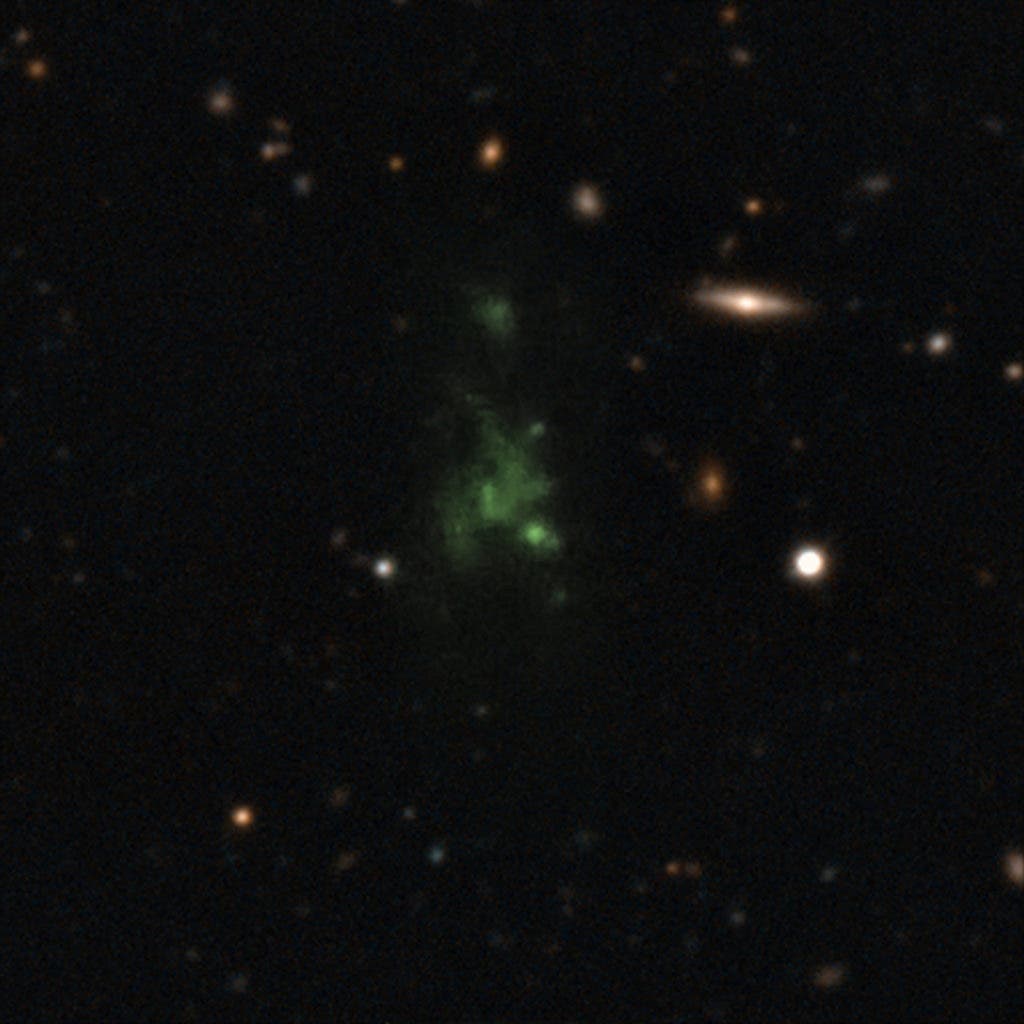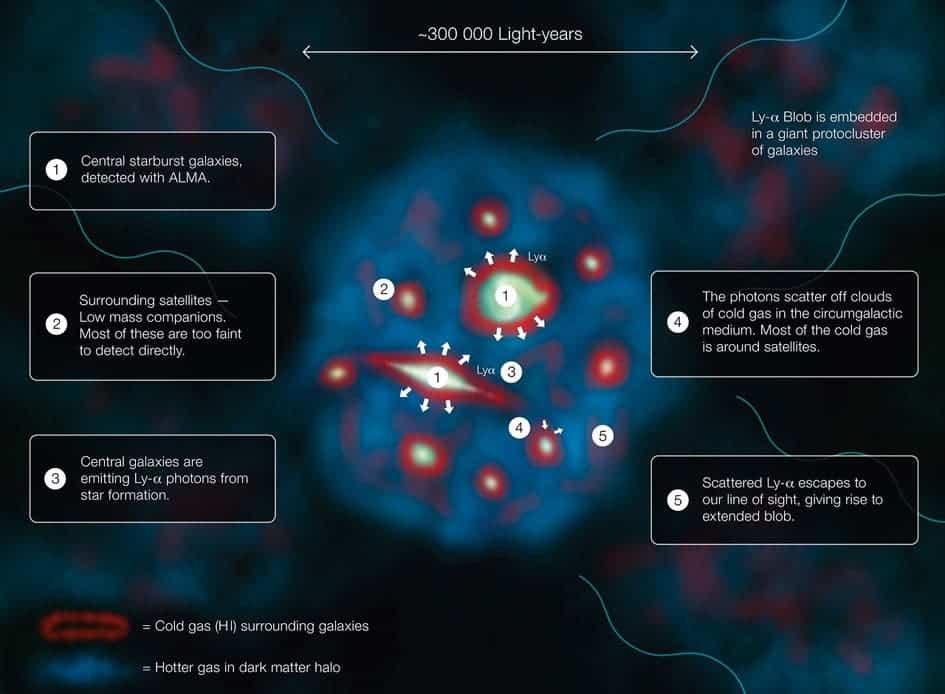
A computer rendering from a simulation of a Lyman-alpha Blob similar to LAB-1. J.Geach/D.Narayanan/R.Crain.
In 2000, astronomers came across a rare and unusual find — a giant blob of hydrogen gas that stretches for hundreds of thousands of light-years and reflects bright ultraviolet light known as Lyman-alpha radiation. For many years, scientists have been trying to find what makes these huge clouds of gas shine so brightly.
A team of astronomers from the United Kingdom might have finally discovered the true nature of these blobs using a powerful telescope in Chile called ALMA, along with ESO’s Very Large Telescope.
Jim Geach, from the Centre for Astrophysics Research of the University of Hertfordshire, and colleagues directed the Atacama Large Millimeter/Submillimeter Array (ALMA) onto the largest Lyman-alpha blobs we know. The subsequent analysis of the data beamed back by the large telescopes suggests that the unceremoniously dubbed Lyman-alpha Blob 1, or LAB-1, which is about ten times larger than the Milky Way, hosts a pair of large galaxies in its core. Previously, these galaxies were obscured by the bright hydrogen gas.
Inside these galaxies, star formation is evolving at a huge pace — almost a hundred times faster than in the Milky Way.
Deep imaging and spectroscopy also showed that the two galaxies are surrounded by numerous other galaxies, only much fainter. These companions likely serve to as the ‘brick and mortar’ needed to drive star formation in the bright galaxy pair. And to double-check their work, a sophisticated galaxy formation simulation showed that the Lyman-alpha waves can be emitted if ultraviolet light produced by star formation in the ALMA sources scatters off the surrounding hydrogen gas.
“Think of a streetlight on a foggy night — you see the diffuse glow because light is scattering off the tiny water droplets. A similar thing is happening here, except the streetlight is an intensely star-forming galaxy and the fog is a huge cloud of intergalactic gas. The galaxies are illuminating their surroundings,” Jim Geach, lead author of the new study published in The Astrophysical Journal, explained.
LAB-1 will likely turn into a galaxy cluster if it hasn’t already, considering light emitted by the blog takes 11.5 billion years to reach us. Though not yet certain, these blobs might be more important than previously believed — it is inside such cosmic nurseries that the most massive galaxies in the universe form.
“What’s exciting about these blobs is that we are getting a rare glimpse of what’s happening around these young, growing galaxies. For a long time the origin of the extended Lyman-alpha light has been controversial. But with the combination of new observations and cutting-edge simulations, we think we have solved a 15-year-old mystery: Lyman-alpha Blob-1 is the site of formation of a massive elliptical galaxy that will one day be the heart of a giant cluster. We are seeing a snapshot of the assembly of that galaxy 11.5 billion years ago,” Geach added.











